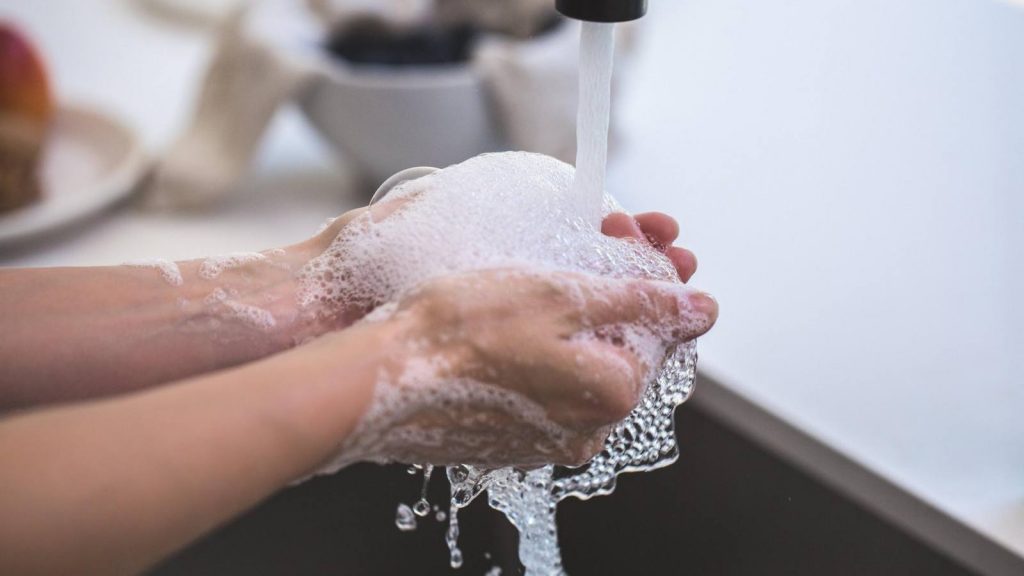Water softener maintenance is among the chief concerns of homeowners debating whether or not to have one installed.
The bad news? Water softeners do require some regular checking up on your part. The good news? This checking up is minimal — and very cheap. In fact, the cost is downright negligible when you consider the impacts hard water in a city like Phoenix, Arizona can have on your plumbing and water heater.
These seven simple tips will teach you everything you need to know about how to maintain a water softener.
Water Softener Maintenance: 7 Key Tips
#1. Check the Salt Regularly
You should only really need to refill your water softener’s brine tank (which is where the salt goes) every two months. However, it’s still a good idea to check more frequently than that. Open the brine tank lid every now and again and make sure the salt is wet and covered in water.
If the salt is dry and the water level looks low, it’s time to refill the brine tank with salt!
Checking up on your softener’s salt level every now and again is particularly important if your water softener is older than 10 years.
This right here tends to be the only ‘water softener maintenance’ you need to perform. But the following tips will ensure your system lasts as long as possible.
#2. Use Good Salt
When you do refill your water softener’s brine tank, make sure you use quality salt. Thankfully, water softener salt is fairly cheap.
For the best of the best, go with evaporated salt pellets, which are the purest out there. Generally, any salt with do, though — except block salt, which is to be avoided unless your water softener manufacturer specifically states otherwise.
#3. Know How to Clean a Water Softener Brine Tank
Knowing how to clean a water softener — and then putting that knowledge to use regularly — is a great form of preventative maintenance.
The best, easiest way to do this? Wait until the brine tank is nearly out of salt and then scoop any remaining rocks out. If your softener is particularly dirty, the salt will look more like sludge.
If the sludge is caked onto the bottom of the brine tank, light prodding with a stick or broom handle should pry it free.
Once you’ve gotten the sludge free, clean the tank with detergent, water and a brush. If mold has built up on the bottom, feel free to use mold remover.
Once you’re done, give the tank a rinse, refill it with salt and then let it regenerate at night.
Voila! That’s how to clean a water softener.
#4. More Rarely… Know How to Clean a Water Softener Resin Tank
Cleaning a brine tank is a no-brainer since you’ll be opening and refilling it roughly every two months anyway.
Knowing how to clean a water softener resin tank is a skill you may not call on as regularly, but it’s useful nonetheless.
Your water softener contains resin beads. While the regeneration process will remove buildup from these beads, this becomes less effective as the beads reach the seven-year mark.
The simplest way to deal with this is to have a professional replace the beads themselves. This can be somewhat costly, with beads and a professional’s time running between the ballparks of $100 and $300.
Remember, though; you’ll only need to do this about every seven years.
Nonetheless, a DIY workaround involves using an iron-cleaning formula to cleanse the beads and restore some efficiency to them.
#5. Know How to Spot Trouble

As far as how to maintain a water softener, perhaps the most valuable skill lies in being able to spot problems before they arise.
Checking the brine tank regularly is a great way to remove one possible cause in the case of an issue.
However, you don’t even necessarily need to open the softener to notice something is awry.
Hard water interacts with soap in a way that prevents it from lathering up properly. This is a very simple, easy way to monitor your water softener’s status on a daily basis.
Some other things to look out for:
- scale (buildup in pipes, sinks, and bathtubs)
- noticeably different water taste
- stiff laundry
- unusually-frequent regeneration (some systems regenerate more often than others but there should be some regularity; if your system begins regenerating on an unusual schedule, take a closer look)
#6. Watch Out for Salt Bridges
A salt bridge is a layer of crust that builds up and separates the water and salt in your tank. This prevents the system from running properly.
By sticking to quality salt, as outlined in tip #2, you’ll avoid this. Still, it’s good to check for salt bridges occasionally. If you spot one, just poke at it with a broom and it’ll give way soon enough.
#7. When in Doubt, Call the Professionals!
Water softener maintenance is a pretty standard affair. For most of a quality softener’s life, you shouldn’t run into many issues that require a professional’s care.
However, it’s time to call a professional if problems persist even after you’ve gone through the essentials, including:
- allowing the softener to regenerate
- checking the salt levels
- clearing any salt bridges that appear
- rinsing or replacing the resin beads
A professional can save you from the hassle of poking around in your water softener’s electronic components without a solid understanding of what you’re doing.
Trust American Home Water and Air for Your Water Softeners in Phoenix
If you’re in Phoenix, Arizona we hope you’ll trust American Home Water and Air for all your water softener maintenance and installation needs including water softener loop installation. (we also do maintenance and cleaning for air conditioners). You can also find other fix it guides for common HVAC and plumbing problems like an air conditioner not cooling properly. Phoenix has historically been plagued by particularly hard water. Luckily, we have more than 30 years of experience helping thousands of clients choose, install, and maintain all sorts of water treatment systems — including softeners.
Frequently Asked Questions
What happens if my water softener runs out of salt?
If your water softener runs out of salt, the system simply won’t work. Thankfully, this isn’t damaging to the system — but it does mean that it will take a couple days to resume softening water properly throughout your home.
Just refill it as you normally would and then allow it to regenerate.
How to replace resin in a water softener?
Exactly how to replace resin in a water softener will depend on your specific system; refer to the manual. Generally, though, the process requires some skill and specialized tools. You’ll need to disengage the softener, unscrew the valve head and then dump the existing resin beads and replace them with the right amount and type.
Do water softeners need to be serviced?
A good water softener system can last years without professional attention. Eventually, you may need to hire a professional to replace the resin beads or troubleshoot a more complicated issue — but day-to-day service and maintenance can be done by you.
Can bacteria grow in a water softener?
Bacteria can indeed grow inside a water softener. It is important to check the brine tank’s cleanliness frequently and clean out mold or bacteria when you see it.
How long does a water softener last for?
While a water softener’s resin beads will start to lose efficiency after seven years, the system itself should last you upwards of 20 years granted you maintain it properly.














